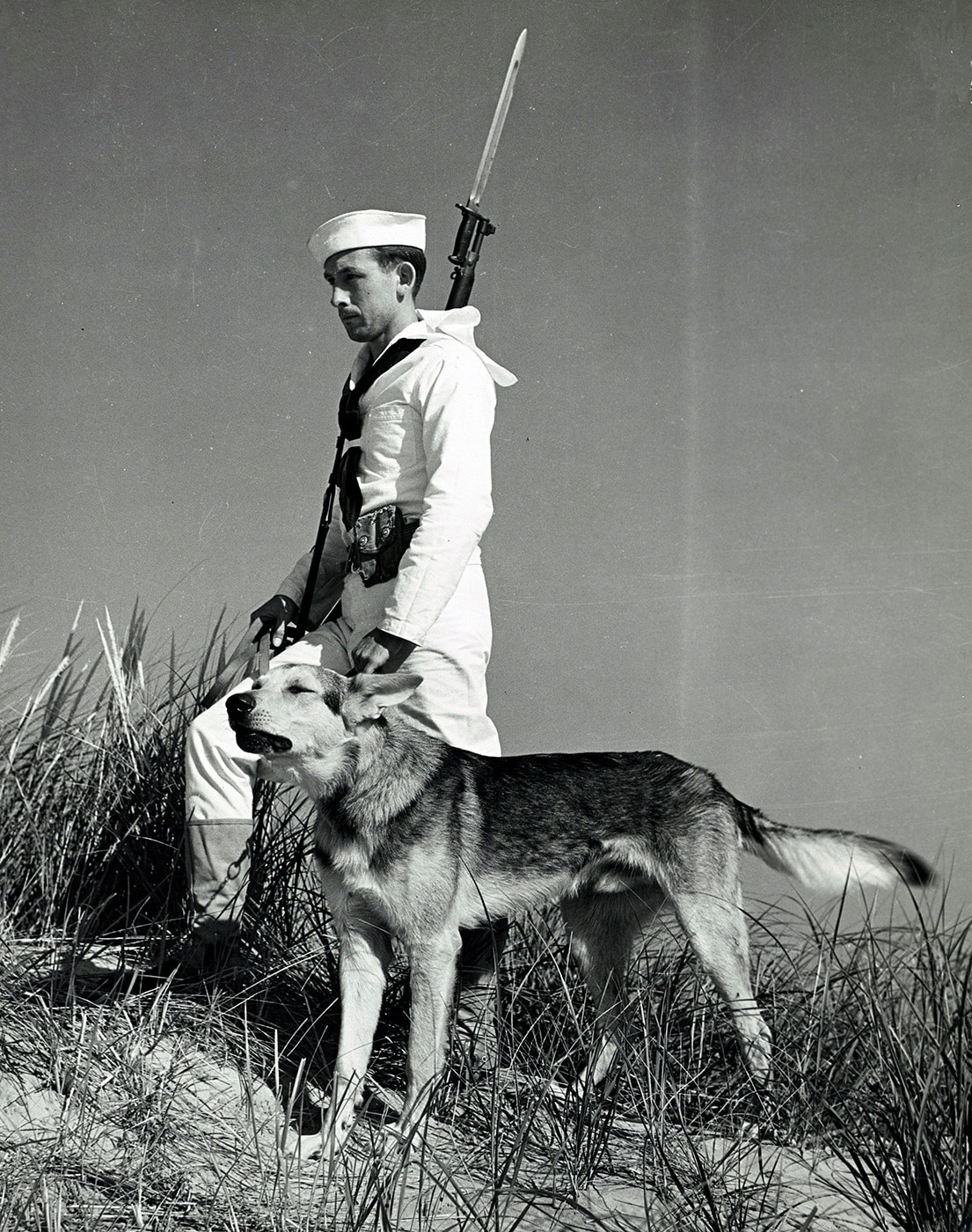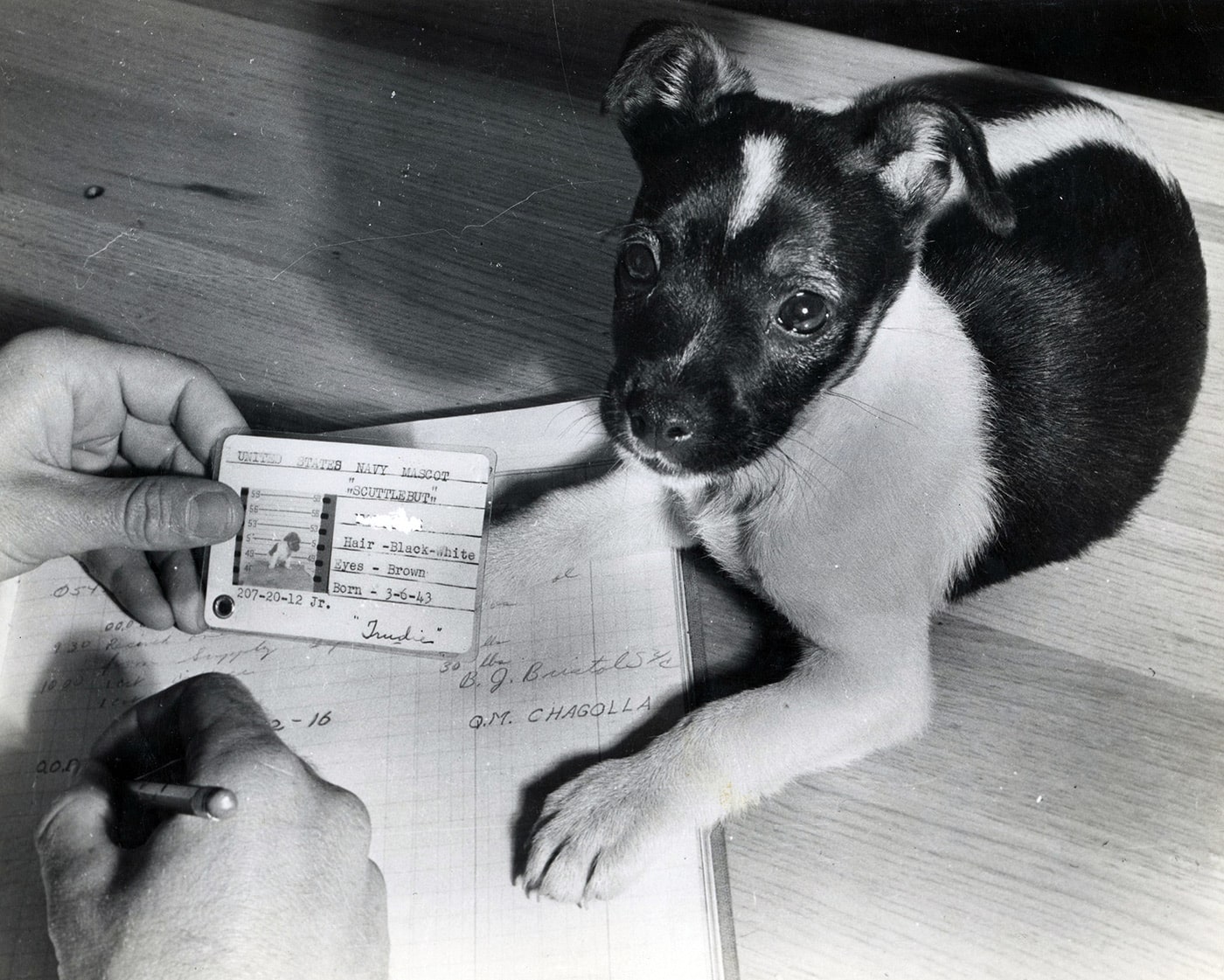He detects even the faintest sound and the slightest motion that is out of place.
I couldnt ask for more from any friend or relative, human or canine.
Dogs had been used by military formations for hundreds, if not thousands of years.

U.S. Marine scout dogs and their handlers on Bougainville during World War II. Image: NARA
The French and Belgian armies had often used dogs to tow machine gun carts in World War I.
The practice was soon abandoned.
American dog owners quickly stepped in to help and formed Dogs for Defense, Inc (DFD).
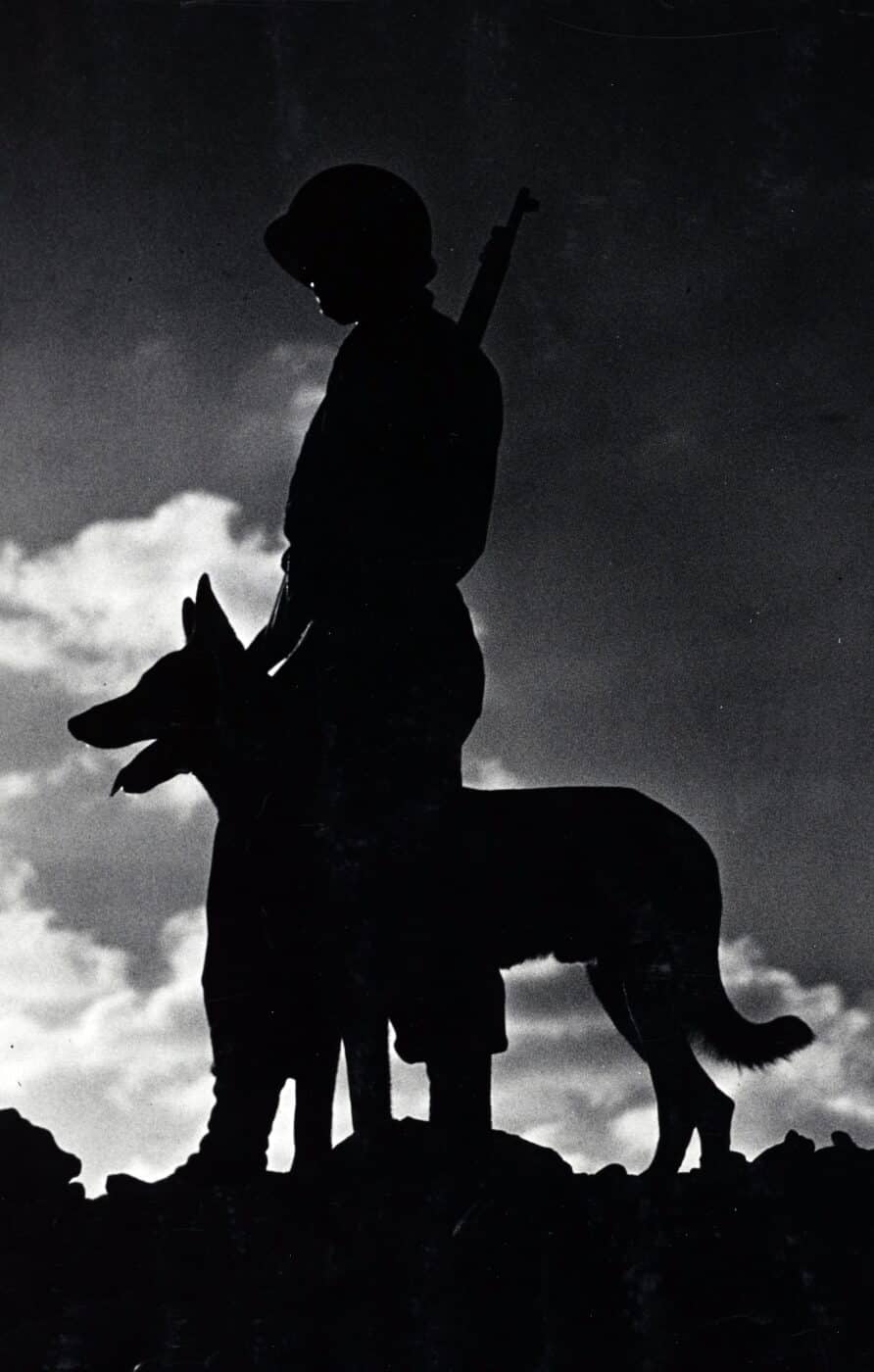
Standing watch in the U.S. Coast Guard, this German Shepherd lived their motto “Semper Paratus”. Image: NARA
Some of the dogs were also used in coastal and beach patrols.
American dogs were going to take the fight to the Axis.
The dogs were quickly confused on the chaotic battlefield.
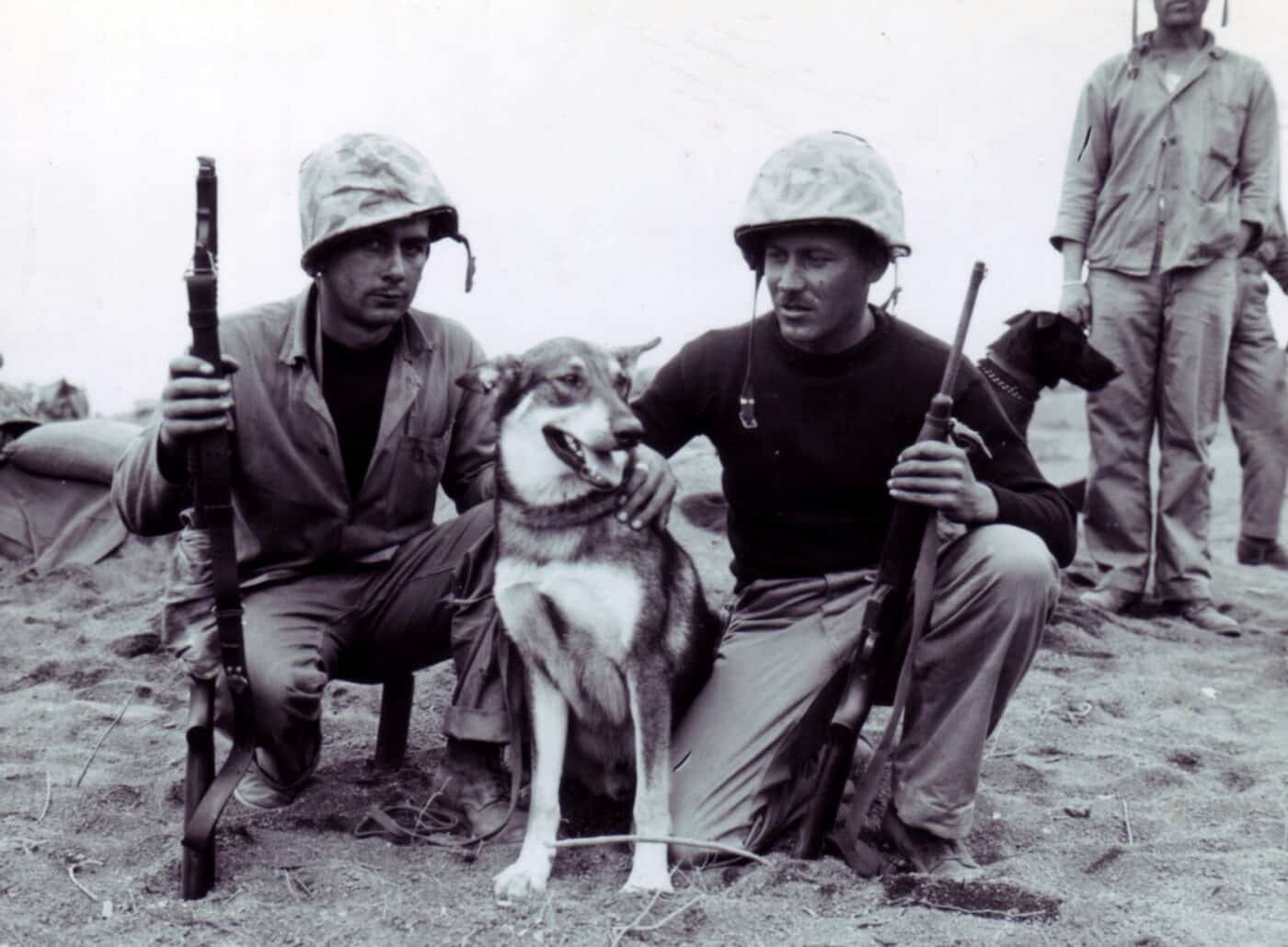
U.S.M.C. War Dog “Rex” on Iwo Jima. The Leatherneck on the left carries a Trench Gun 12-gauge shotgun. Image: NARA
When the MG opened fire, Chips charged forward to attack.
Private Rowell reported:
There was an awful lot of noise and the firing stopped.
Then I saw one soldier come out of the door with Chips at his throat.
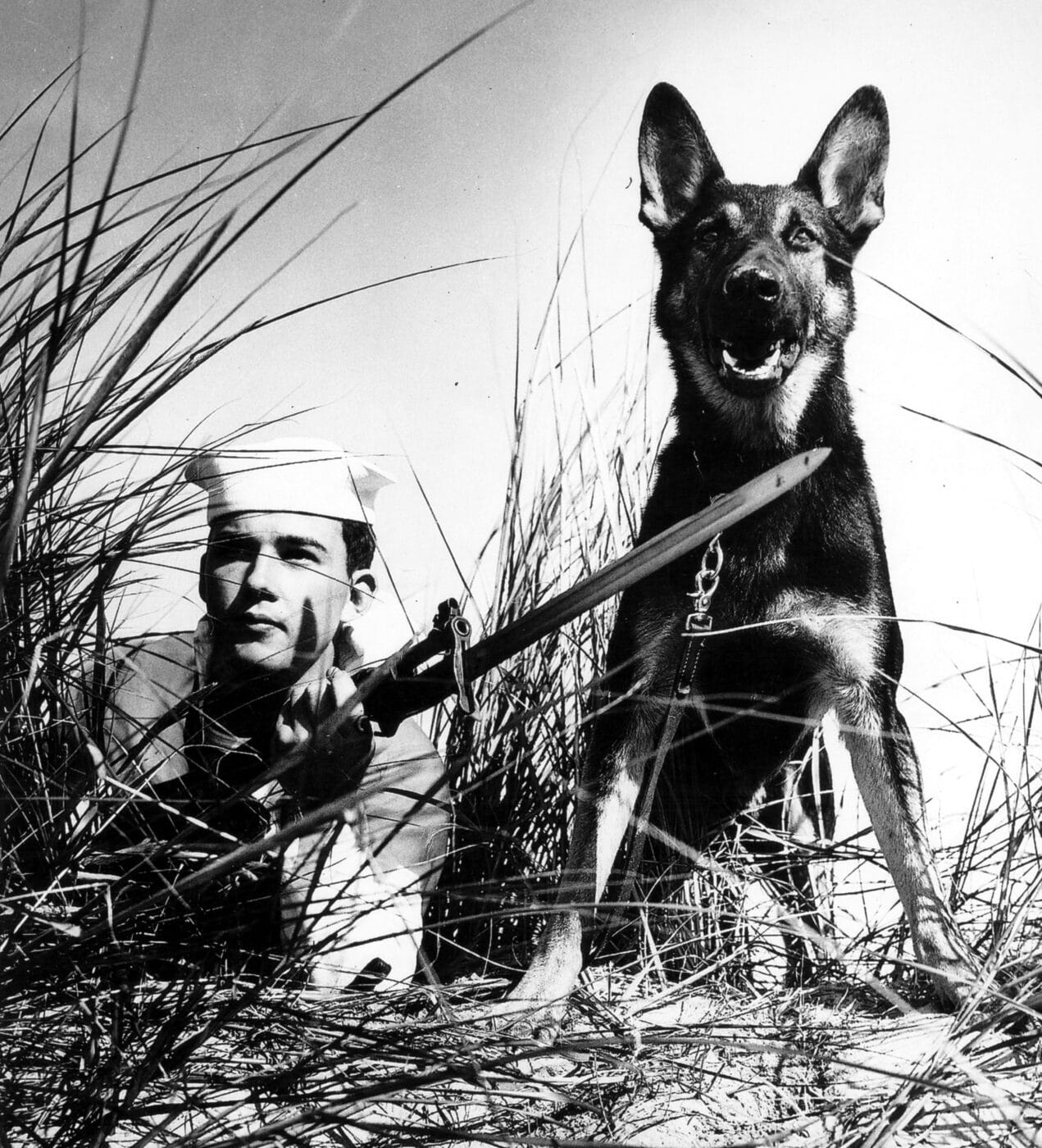
A U.S. Coast Guard beach patrol featuring anM1903 rifle equipped with an M1905 bayonet. Image: NARA
I called him off before he could kill the man.
Witnessing this, the rest of the gun surrendered.
Chips was wounded in this action, suffering several cuts and powder burns.
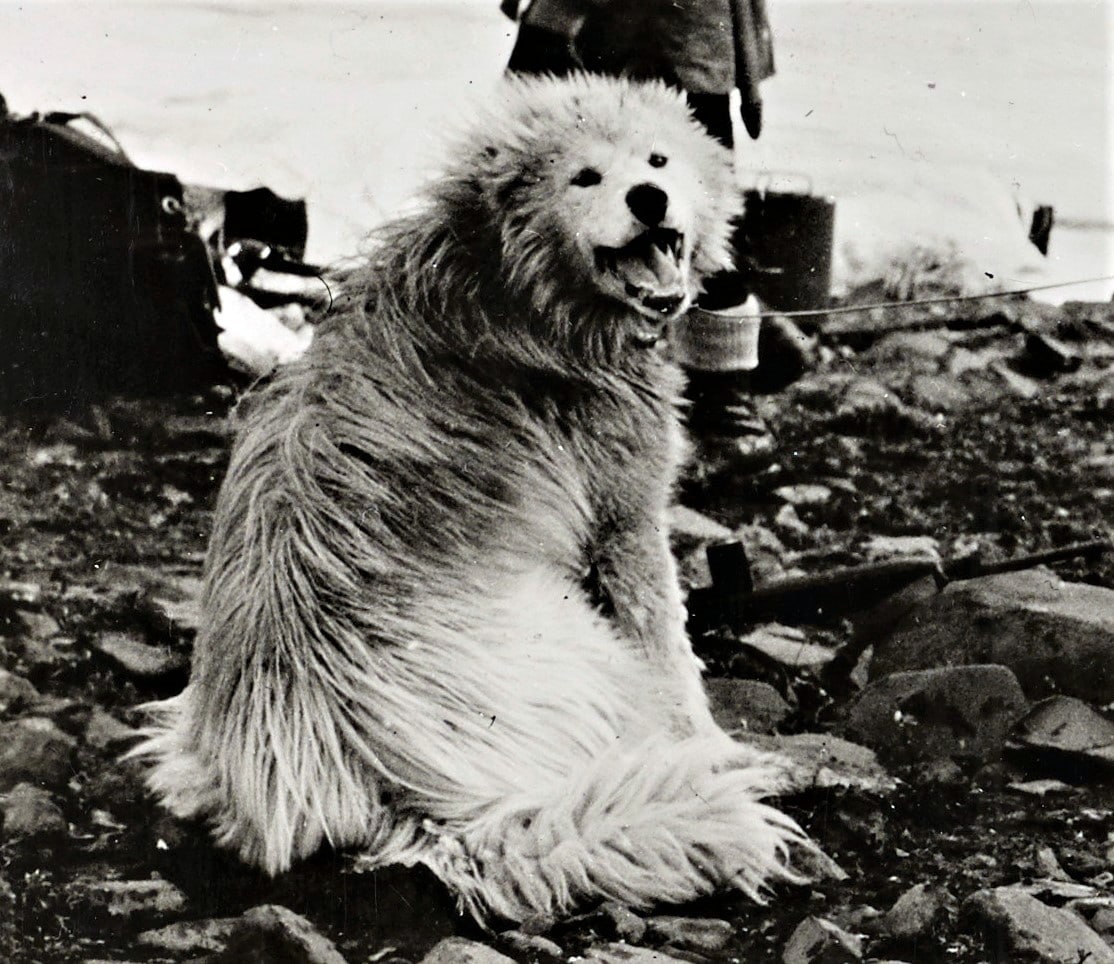
This happy sled dog was a member of the U.S. Coast Guard’s Greenland Patrol, which was responsible for eliminating German weather reporting in the Arctic. Image: NARA
Later, he was also awarded the Purple Heart.
He came home to a heros welcome, fit for any American combat veteran.
This concept can be traced back to the USMC manual Small Wars Operations, revised in 1935.
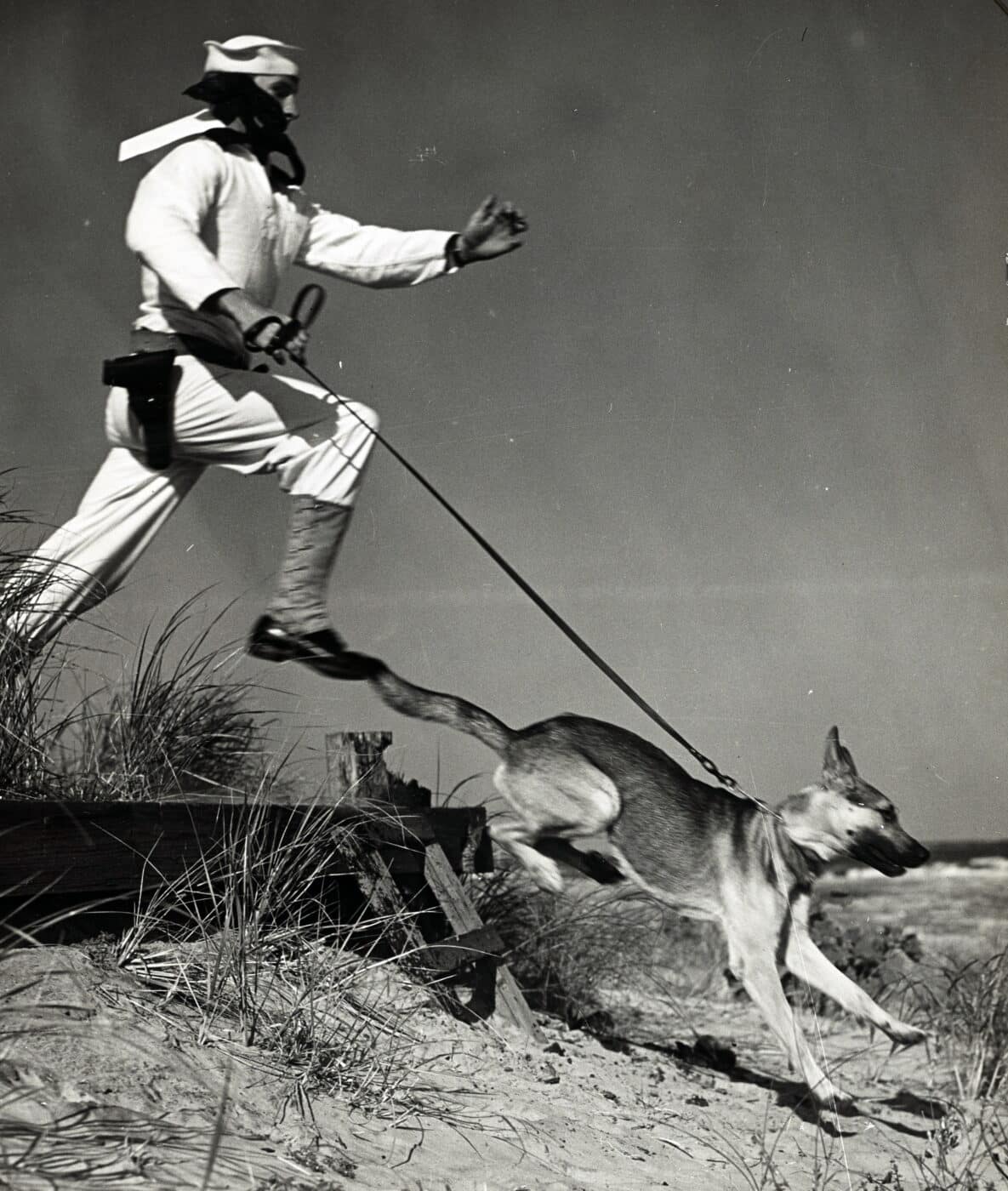
Being a handler means keeping up with the dog across all kinds of terrain. Here this U.S. Coast Guard team patrols a beach for German saboteurs. Image: NARA
Scout dogs were involved in aggressive patrolling and reconnaissance.
Messenger dogs were trained to carry communications between two handlers over several miles.
A well-trained handler is just as important as a well-trained dog.
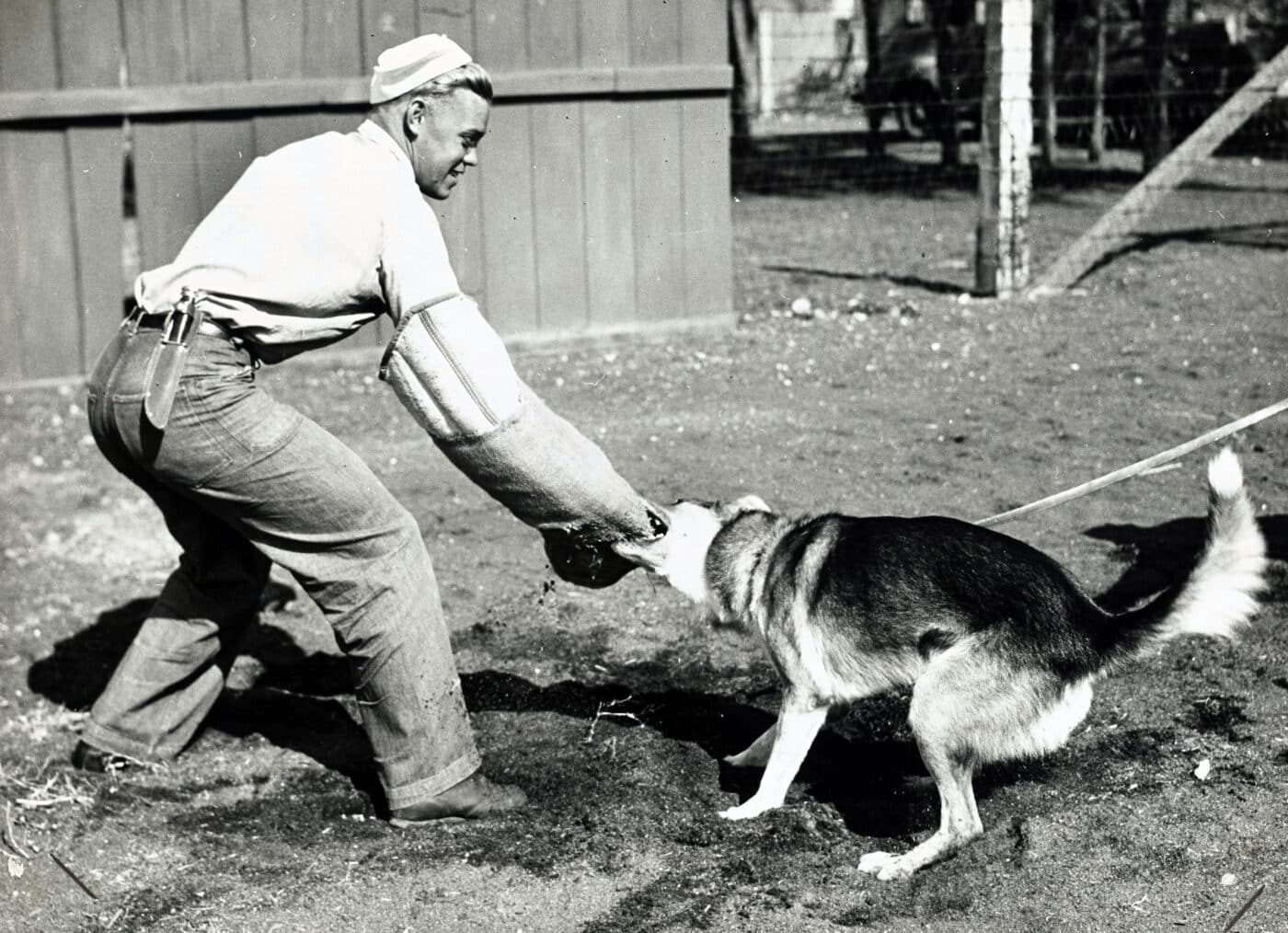
War dogs underwent intensive training — learning when to bite, plus how, where and who to bite were critical elements for combat dogs to learn. Image: NARA
When such men were not available, they had to be trained as scout-snipers concurrently with the dog handling.
A high percentage of the best handlers came from farms where they had handled hunting dogs and farm stock.
There was no known means of compelling a man to be an expert dog handler.
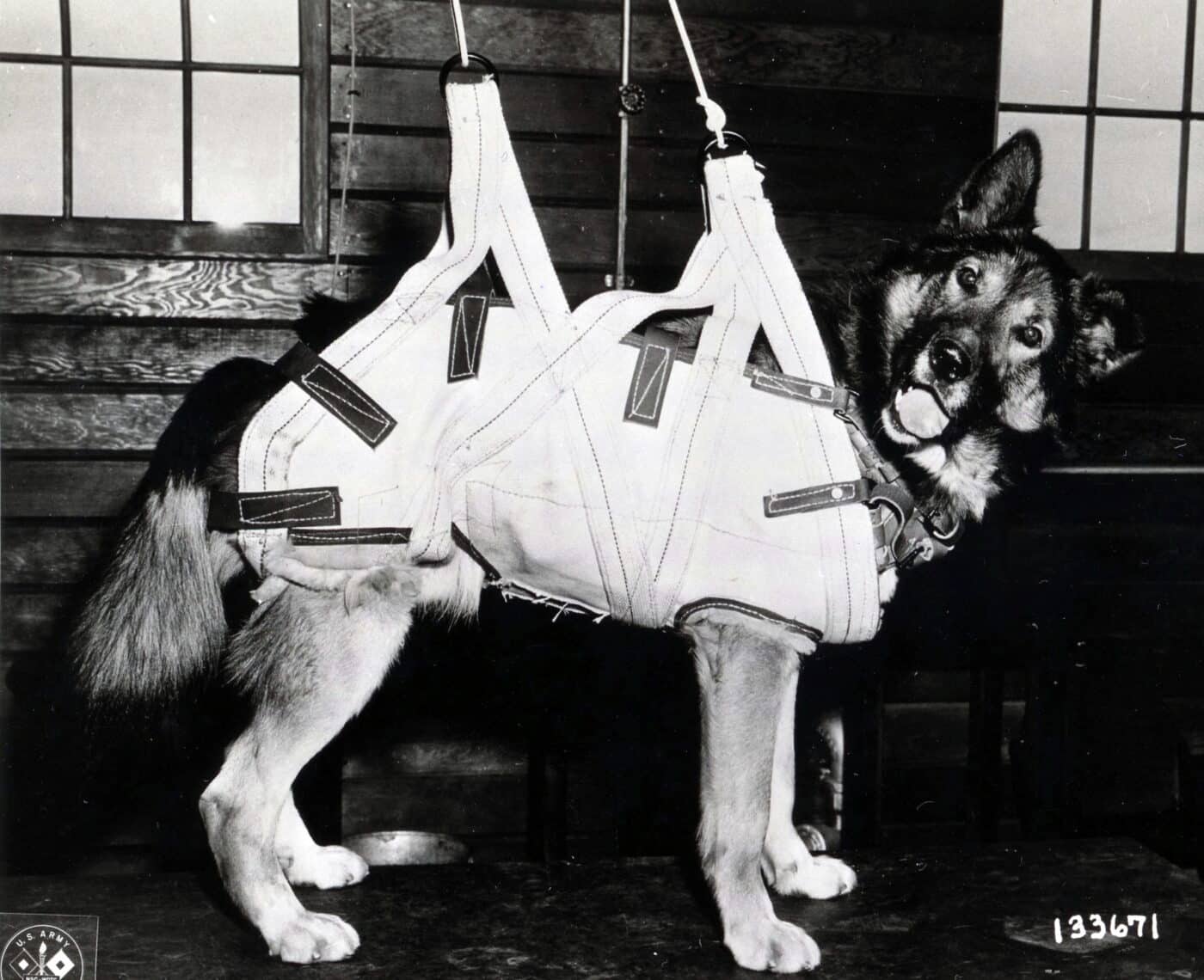
“You want me to do what?” Experiments were conducted to include war dogs in paratroop units. Image: NARA
Some men soon learned that they were not war dog men and were immediately transferred to other duty.
But the latent possibilities of combat dog units proved itself beyond any doubt.
Otto alerted the position at least one hundred yards away.
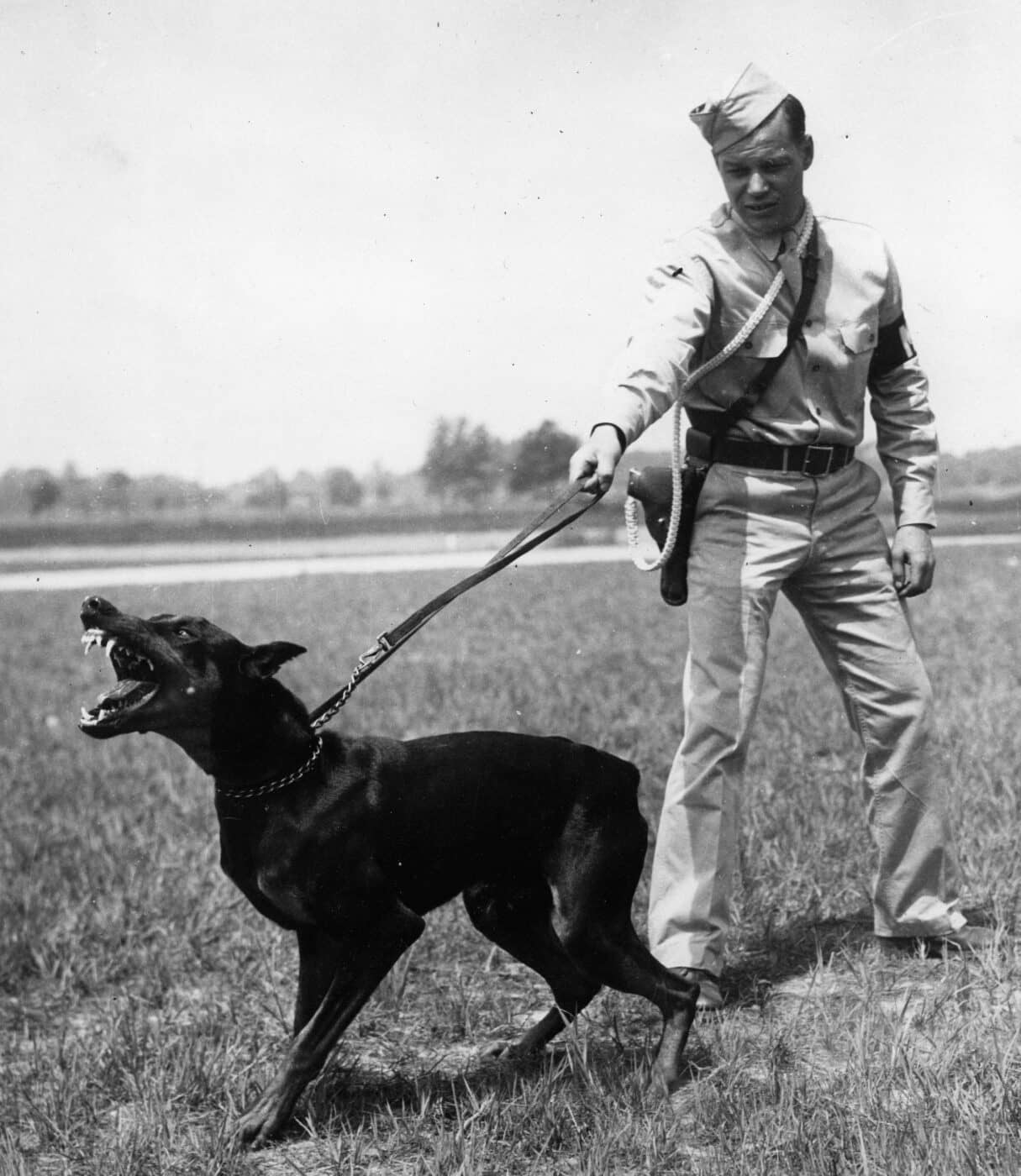
The timeless intimidation factor of the sentry dog. Often, an aggressive dog can inspire more fear than a trained soldier with a firearm. Image: NARA
This was a vital message because the telephone lines had been cut.
A Jap sniper was shot down out of the tree.
Conclusion
The names of American heroes in World War II creates a remarkable list.
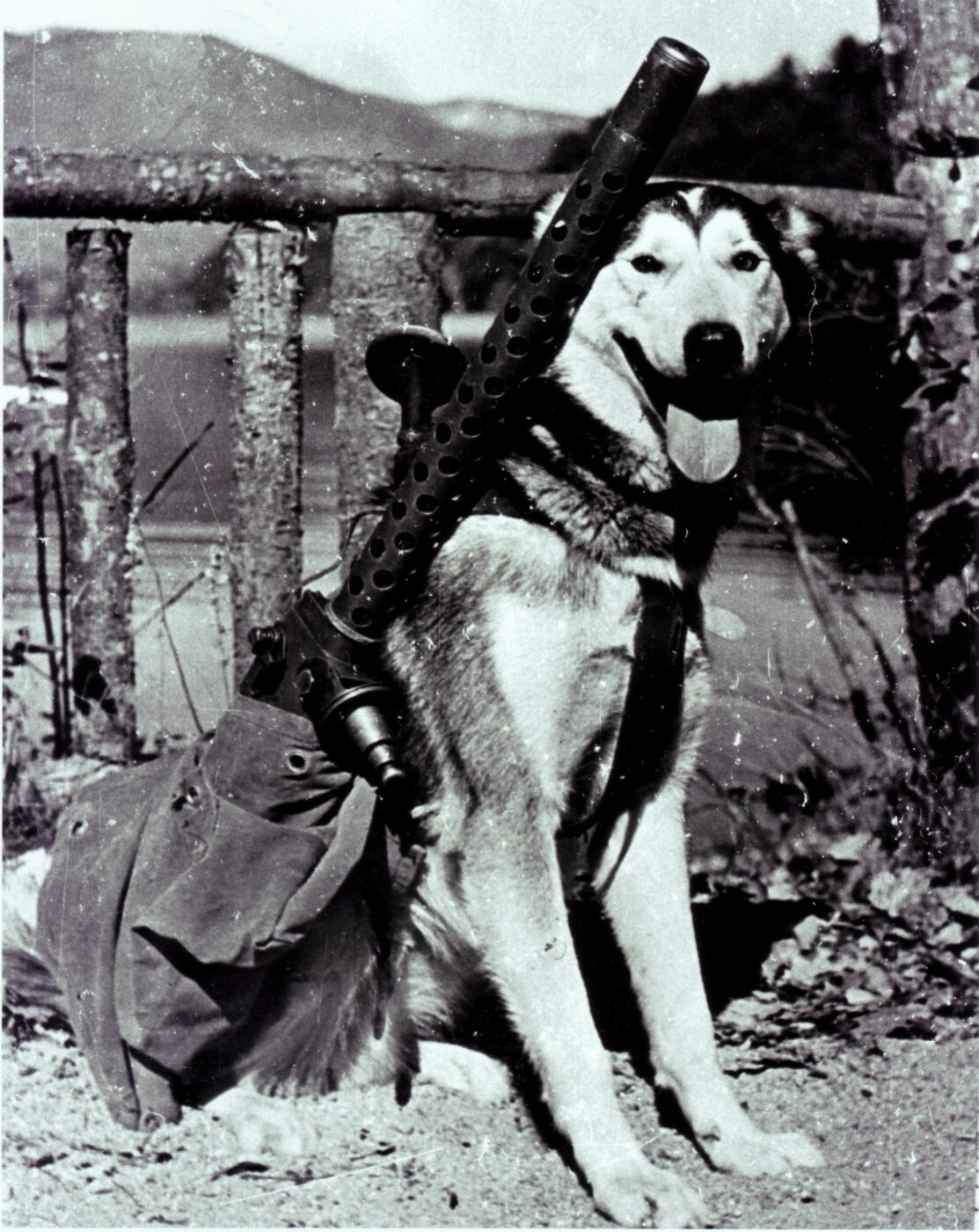
Dogs like the Husky can carry heavy loads with ease. This happy fellow carries a Browning .30 caliber M1919A4 machine gun and its M2 tripod. Image: NARA
Among those names it’s possible for you to find the monikers of many war dogs.
Initially, nearly any breed was considered, but most proved unsuited to the work.
Most of the major powers used canines to some extent during World War II.
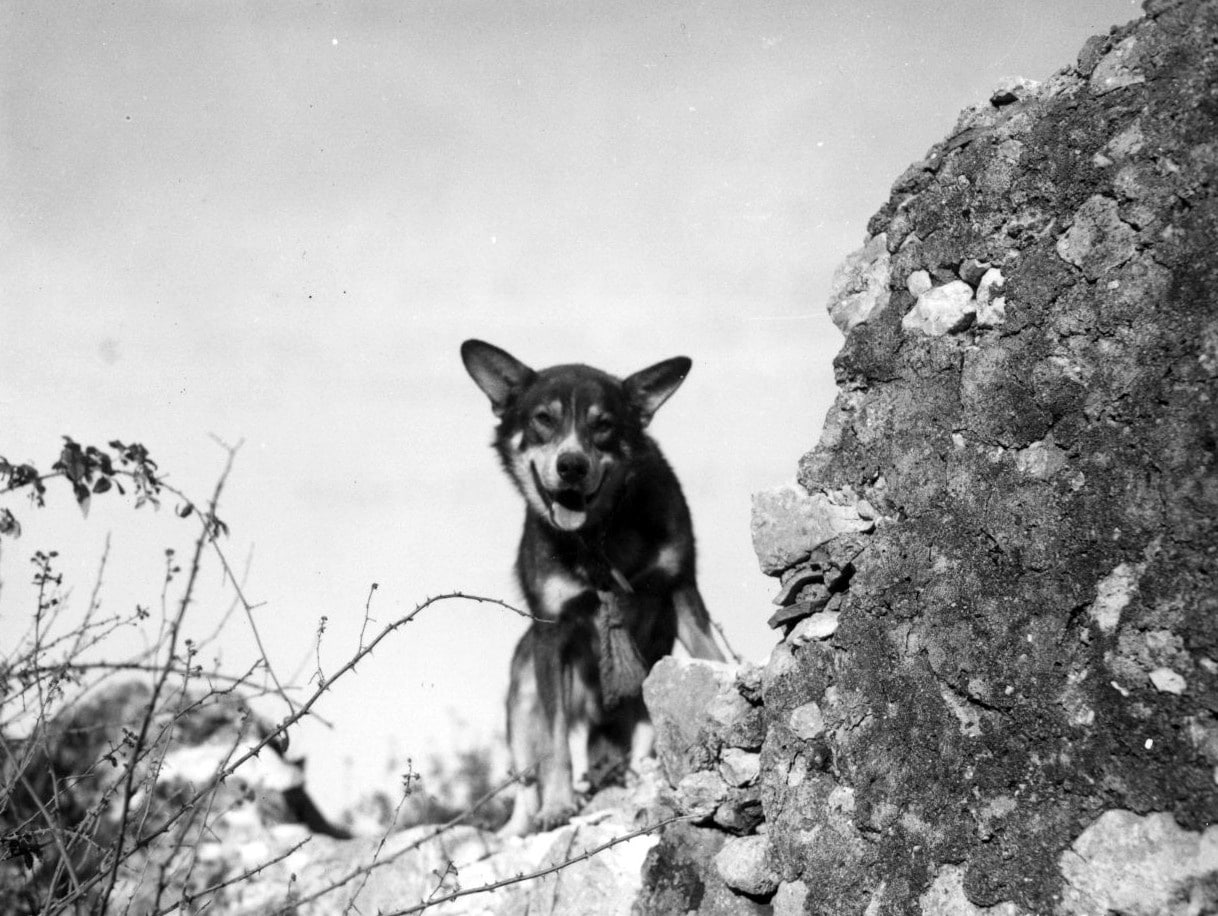
“Chips”, the medal-winning war dog of the U.S. 3rd Infantry Division. Chips was wounded in this action and was awarded the DSC, Silver Star and Purple Heart. Image: NARA
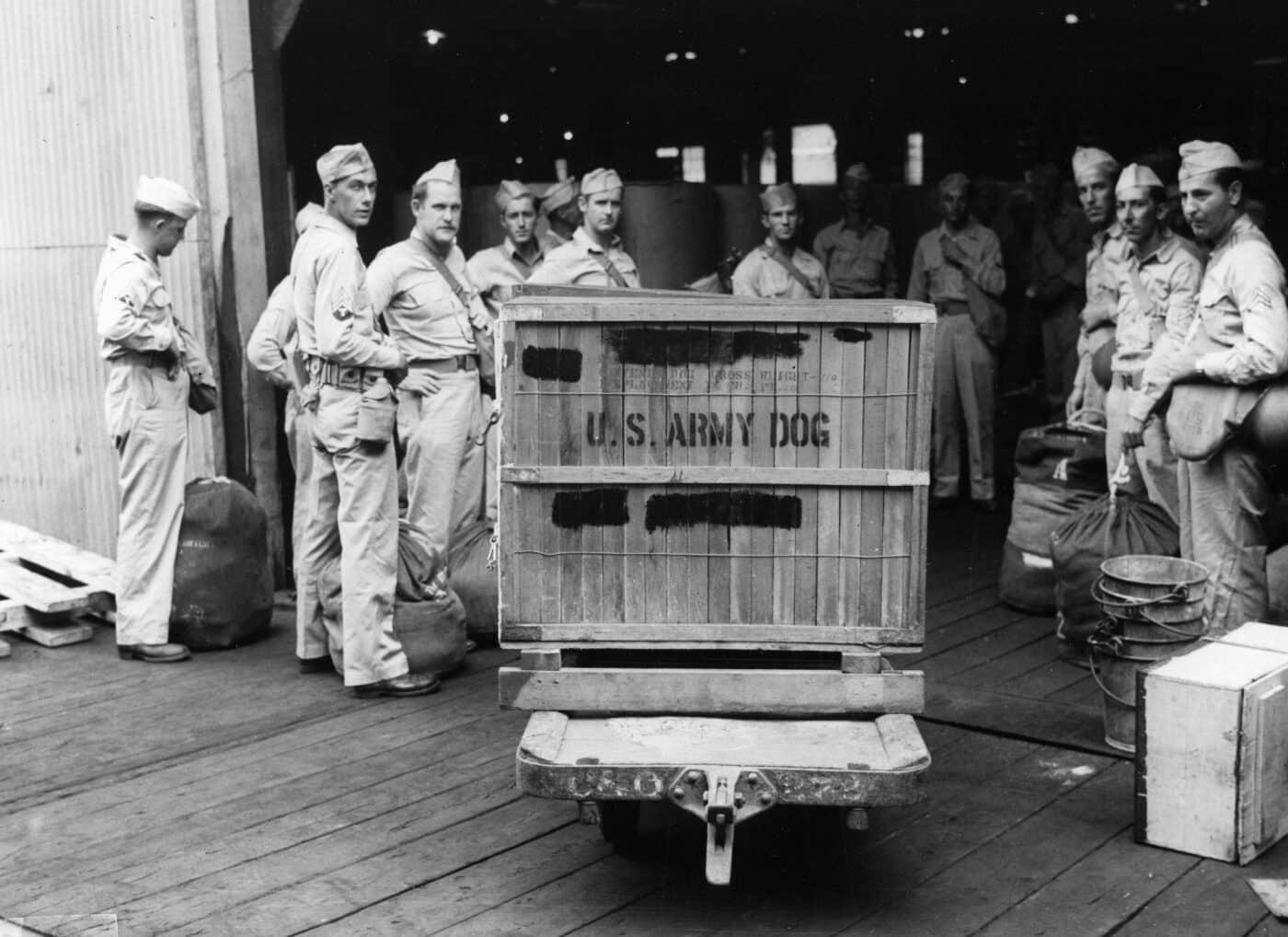
Getting to the front was rarely a smooth ride for American war dogs. Here, a U.S. Army military canine is crated for delivery to the PTO. Image: NARA
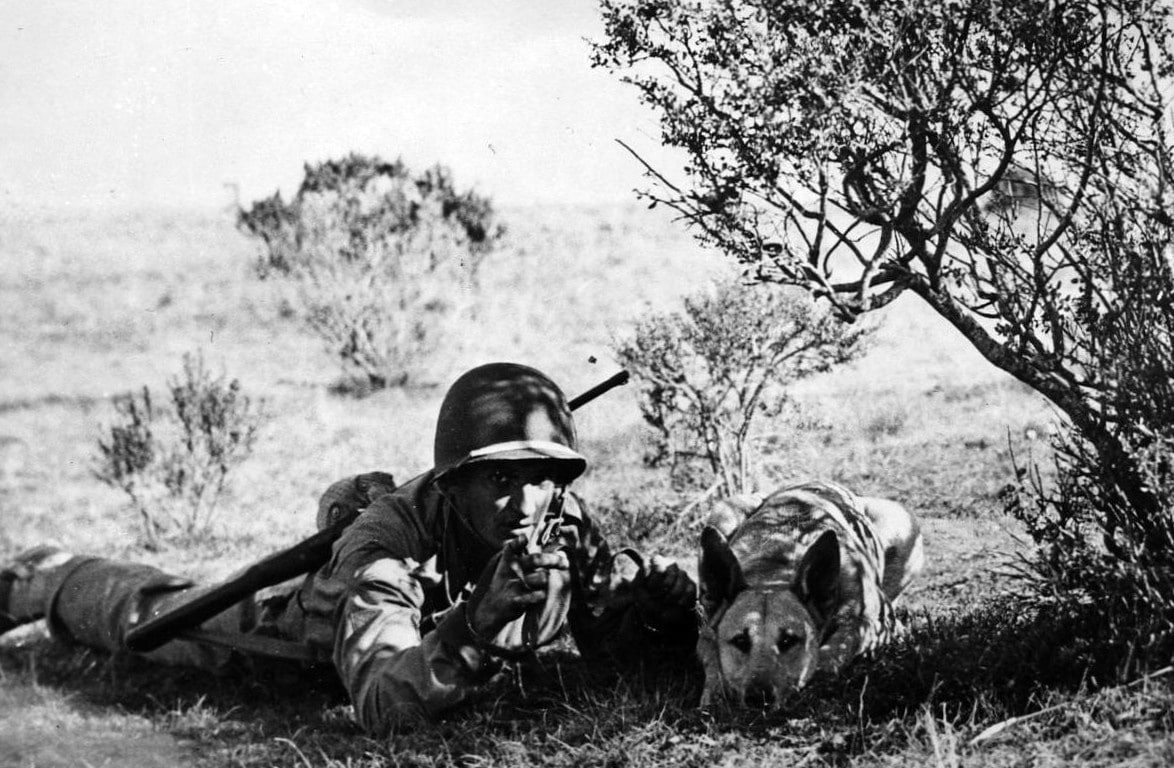
The concept of the “Scout Dog” was successful in both the U.S. Army and U.S.M.C. during World War II. Image: NARA
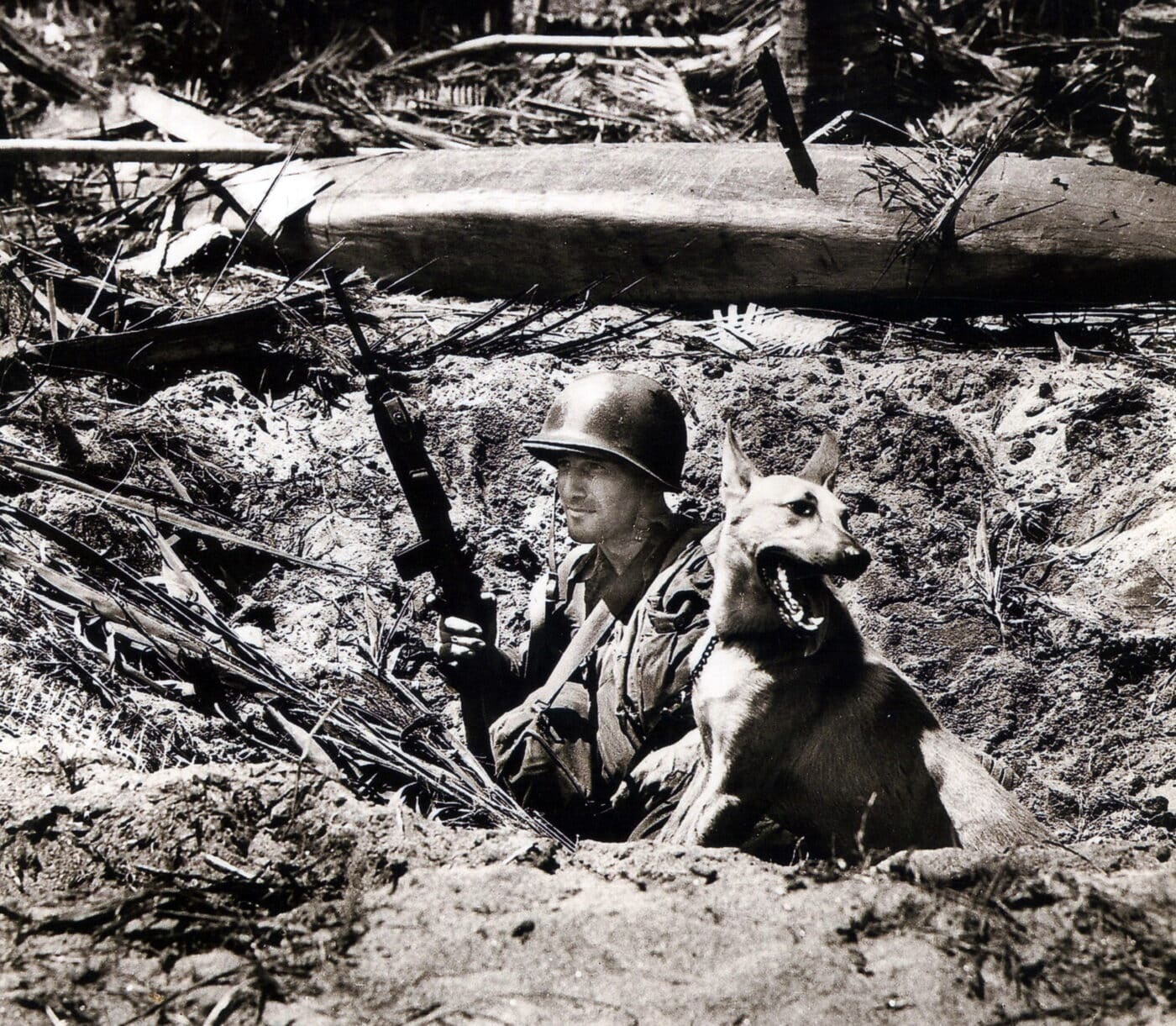
Most of the U.S. Army war dogs were deployed to the Philippines. This one’s handler carries a M1 Carbine. Image: NARA
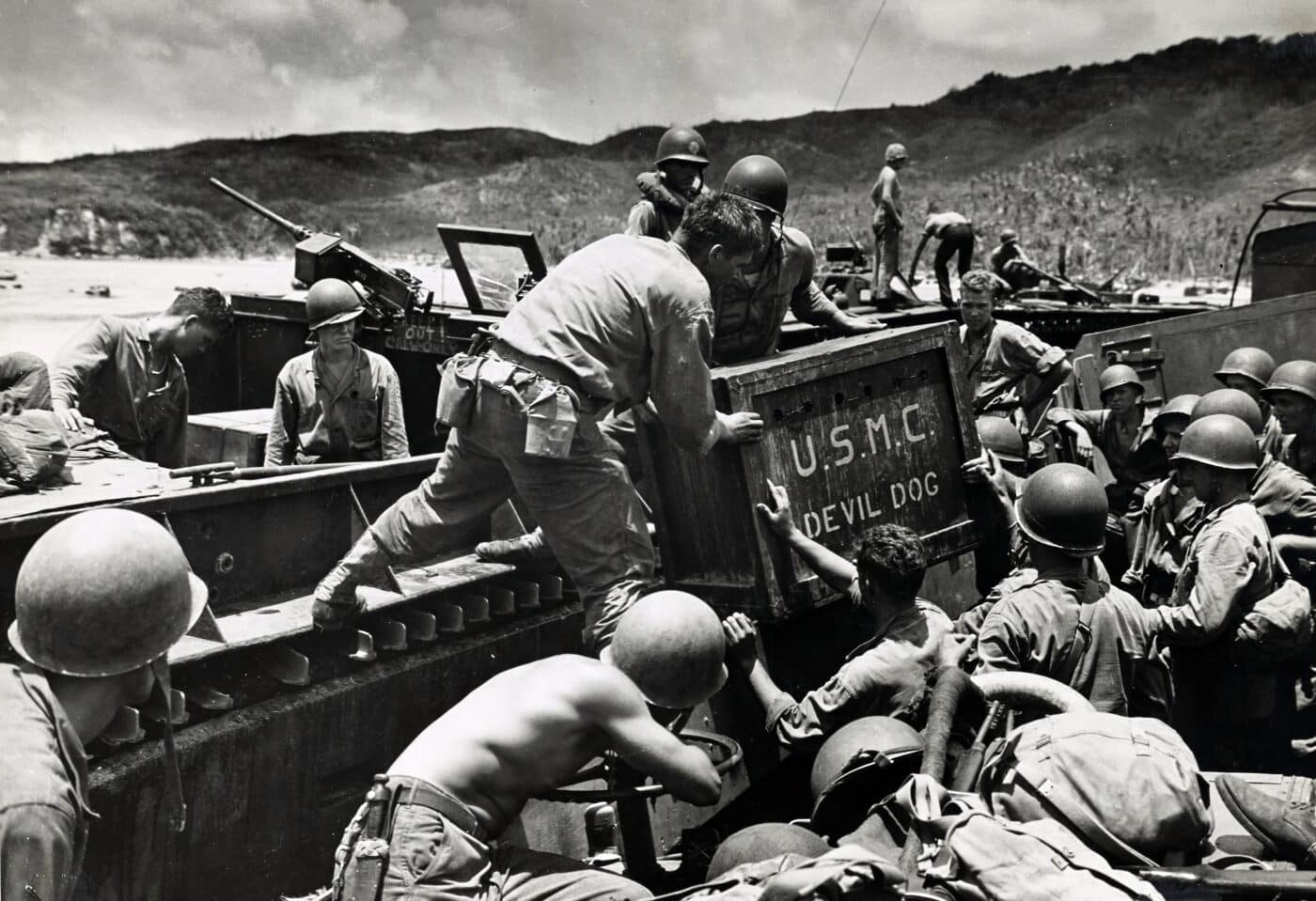
U.S.M.C. Devil Dog delivered to its combat unit, serving on Guam. Image: NARA
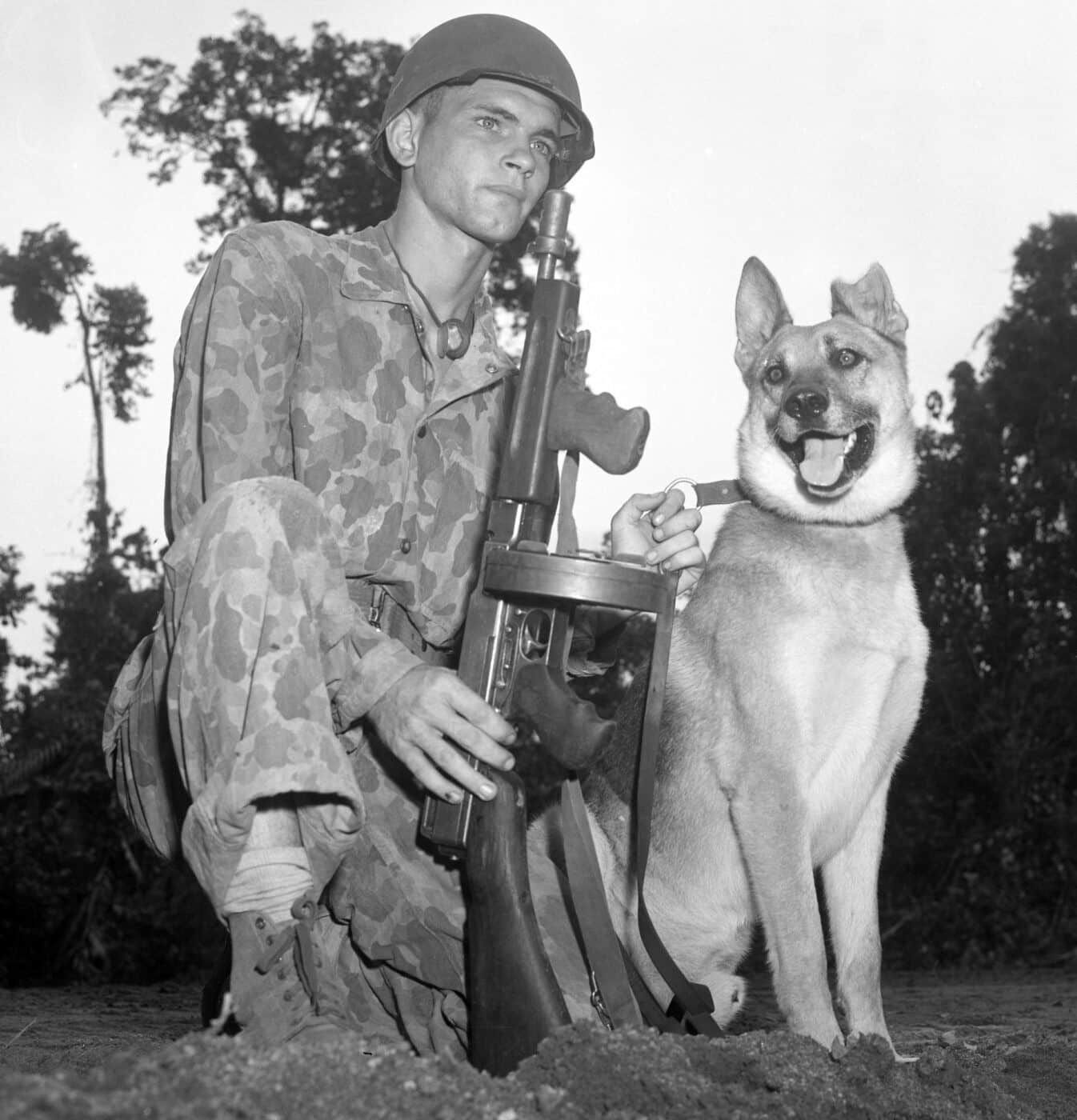
The canine Jack with the 2nd Marine Raider Regiment on Bougainville in December 1943. Image: NARA
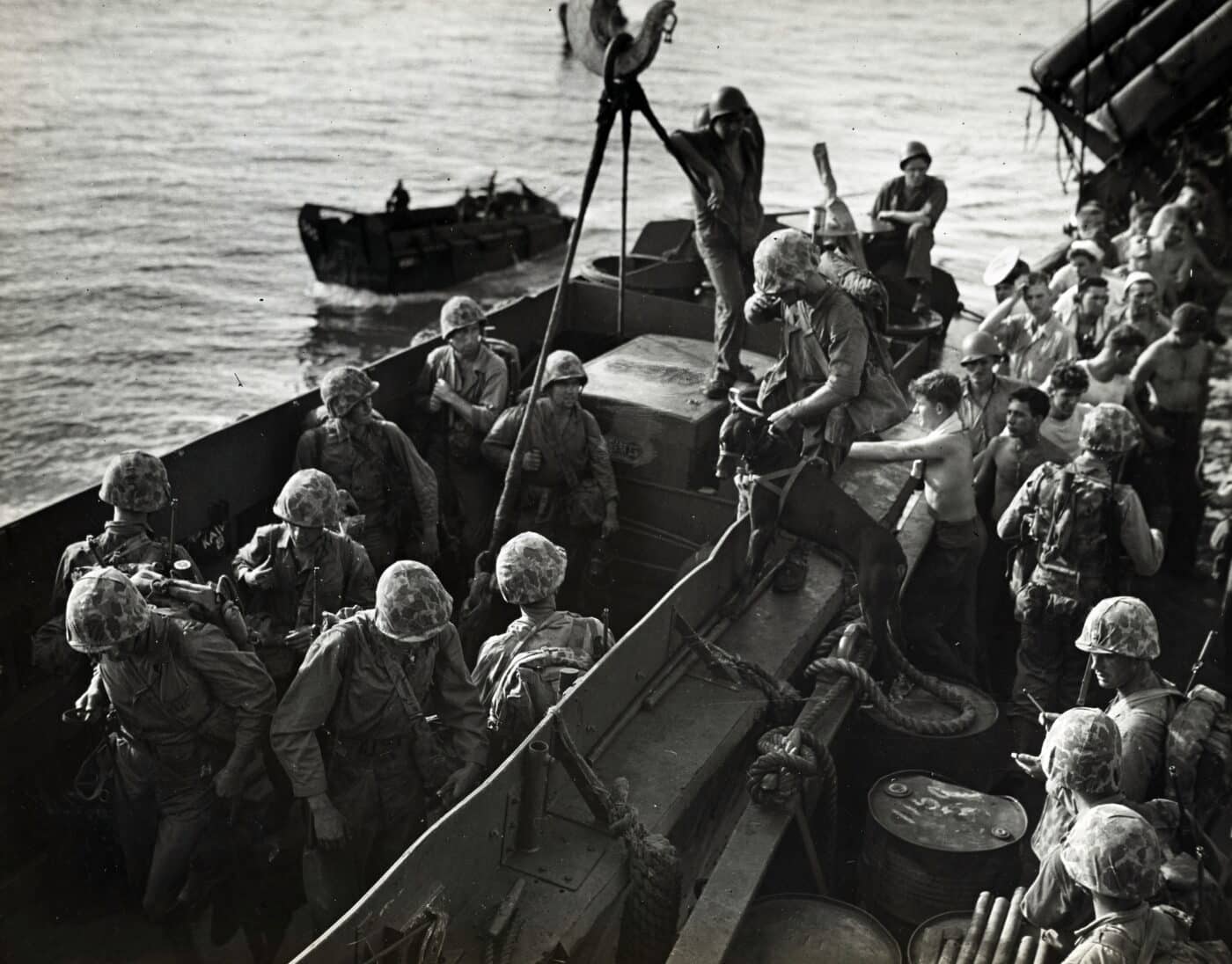
A Marine handler and his Doberman Pinscher transfer to a landing craft on the way to combat on Peleliu. Image: NARA
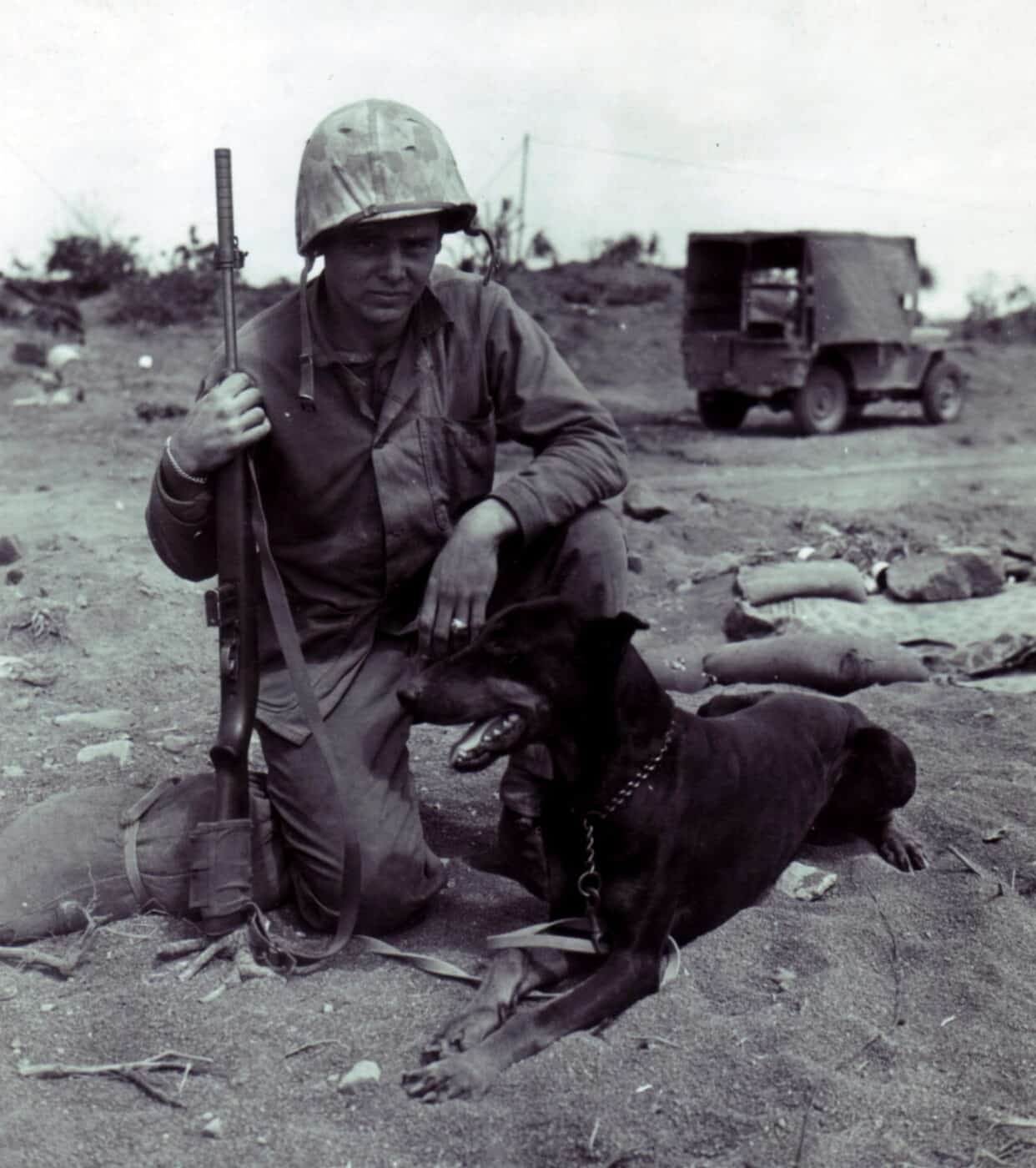
Man’s best friends: “Kip” and hisU.S. Marine handler on Iwo Jimain March, 1945. The Marine is armed with a M1 Carbine that has been fitted with a M8 grenade launcher. Image: U.S.M.C. History Division
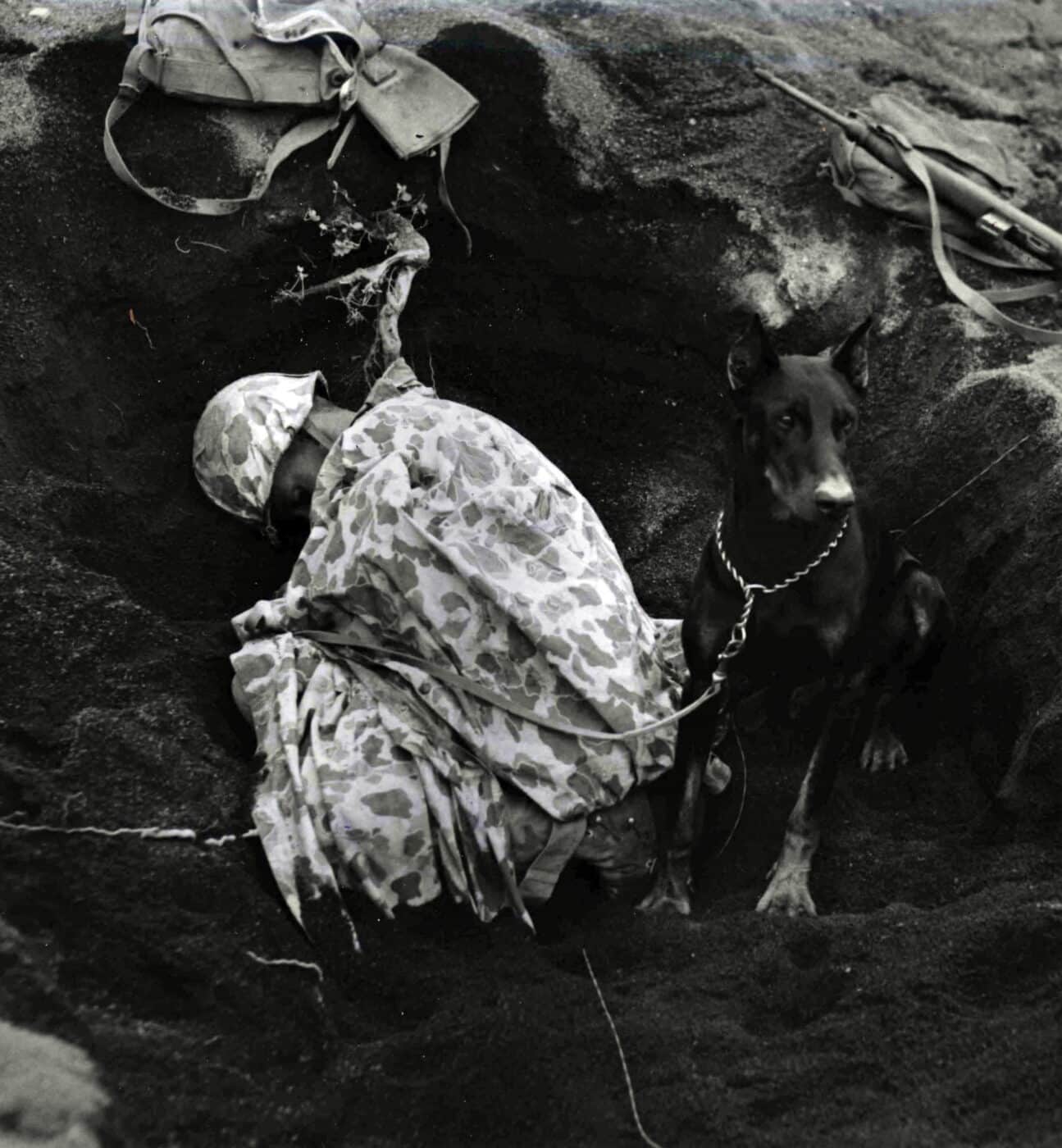
Who better to watch your back when you take a rest? USMC war dog on Iwo Jima. Image: NARA
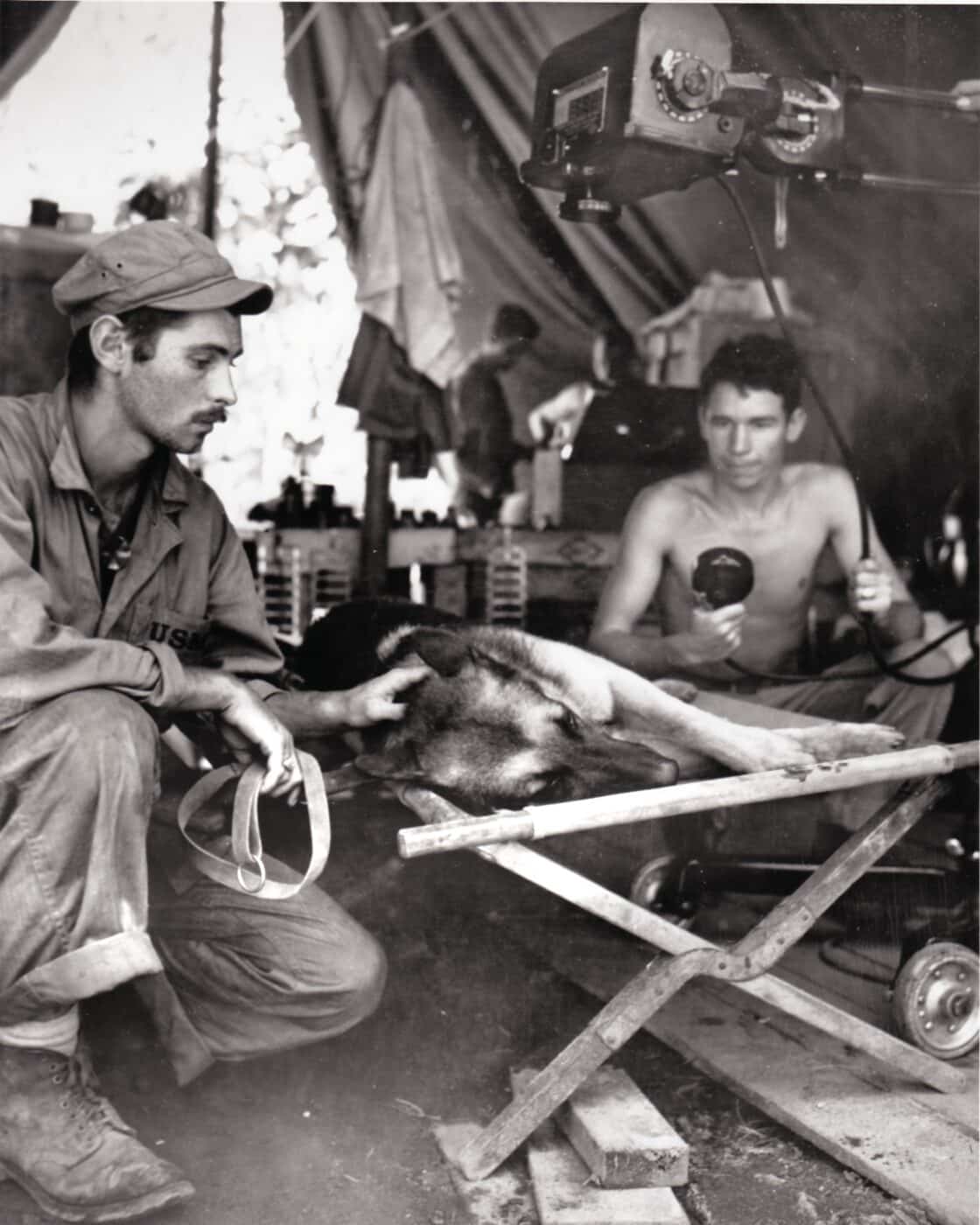
Marine K9s were prime targets for snipers. This Marine dog was hit by a sniper on Okinawa, and despite the best efforts of the Corpsmen, he died of his wounds. Image: NARA
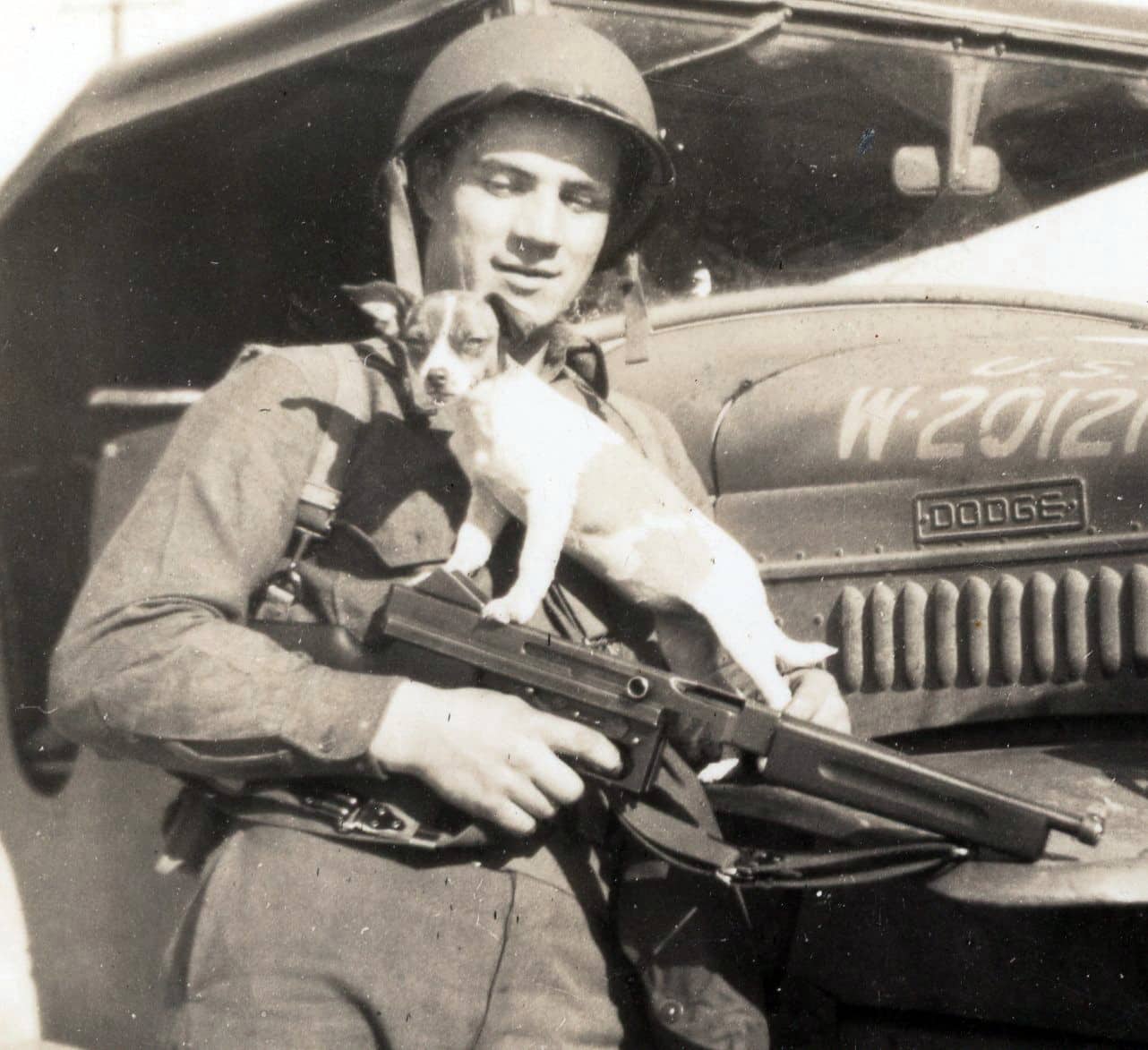
Not all war dogs were formally trained for the job. This little fellow joined the U.S. Army in France, and he fits comfortably atop his friend’s M1A1 Thompson SMG. Image: Author’s collection
